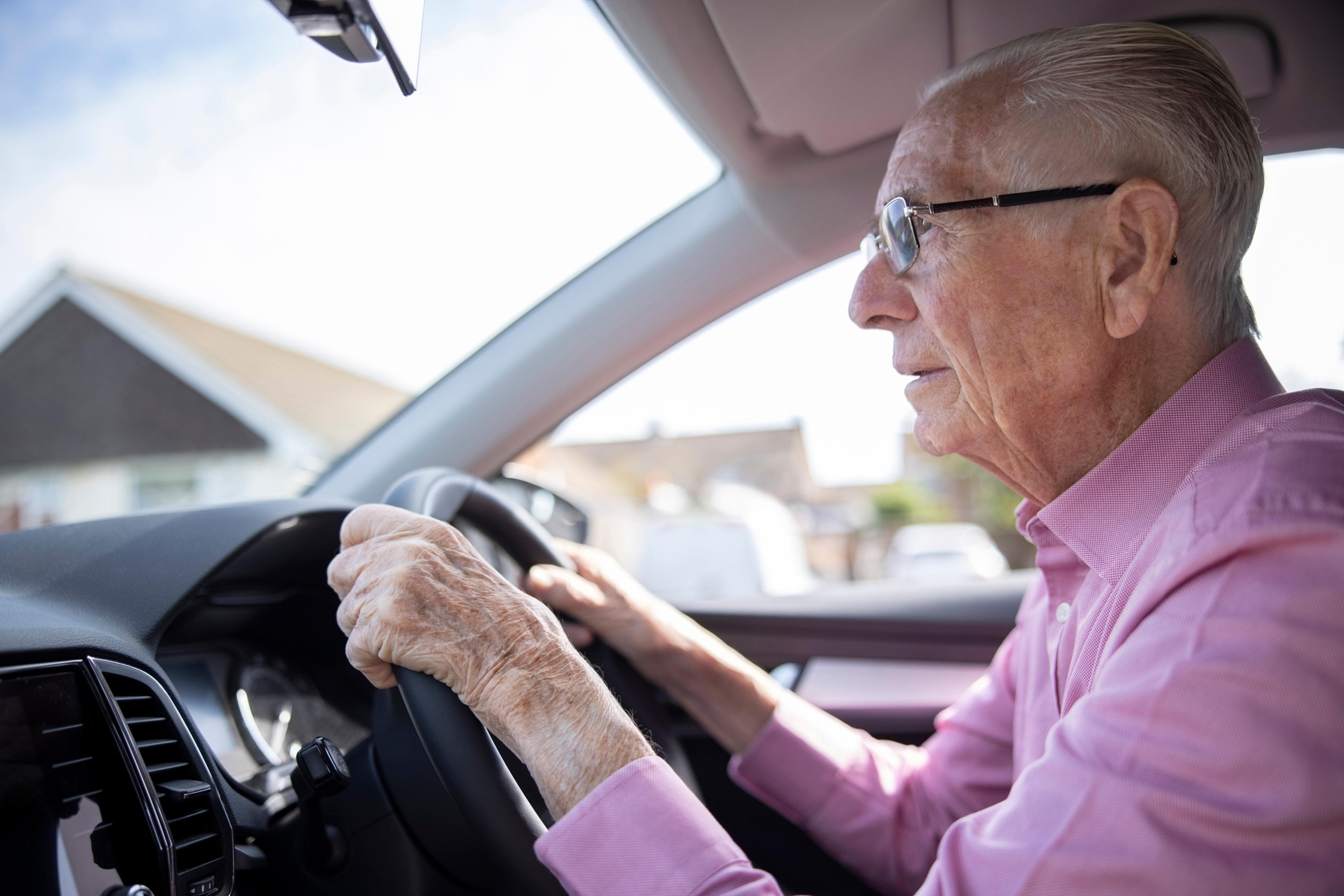Older Driver Safety: When It’s Time to Stop Driving

Dr. Raymond Hobbs
| 4 min read
Dr. Hobbs, MD, is a former senior medical director i...

Currently, 1.2 million drivers in Michigan are aged 65 or older and that figure is rising. In fact, by 2025, one in five drivers is expected to be 65 or older.
Older drivers are more likely to be involved in accidents than younger drivers. Higher crash death rates among this age group are primarily due to increased vulnerability to injury in a crash. Aging can affect changes in vision, physical function and the ability to reason and remember.
Signs it’s time to stop driving
These warning signs may indicate someone should stop driving:
- Difficulty concentrating while driving
- Getting lost on familiar roads
- Habitually getting into minor or near accidents
- Having trouble reading road signs
- Confusing the brake and the accelerator
- Showing a slow reaction time
Older drivers who would like to remain on the road but are showing one or more of the warning signs listed above should meet with their primary care provider, who can help assess vision, hearing, and memory concerns that may affect driving.
The driving ability of older adults living with medical conditions or on medications might also be affected. These conditions can affect a person’s ability to drive safely:
- Alzheimer’s disease
- Arthritis
- Dementia
- Epilepsy
- Glaucoma
- Macular degeneration
- Parkinson’s disease
Primary care providers, ophthalmologists (medical eye doctors) and neurologists (brain specialists) can also offer advice on managing medical conditions or medications to drive safely.
License renewal laws and requirements
Michigan driver’s licenses are typically valid for four years and expire on the driver’s birthday. Most residents are only required to renew their driver’s license in person at a Secretary of State office every 12 years to take a new photo.
When renewing, general health questions are asked. If there is any question about the driver’s ability to drive safely, a doctor will be required to complete a Physician’s Statement of Examination, also known as a DA-4P form.
Required tests determine if the driver’s vision meets minimum standards. If corrective lenses are needed to pass the test, the driver’s license will show that these lenses are required while driving. If the vision test is failed, the driver’s eye care specialist will be required to complete a Vision Specialist’s Statement of Examination (DI-4V) form.
A favorable statement means a license may be issued. Sometimes, limitations – such as “daylight driving only” – will be required based on the vision statement and other information.
How to talk with an older adult about driving and mobility
Speaking with an aging adult about their struggles on the road can lead to an emotionally charged conversation. The best thing a person can do is listen, validate their loved one’s concerns and plan to positively address negative emotions.
Don’t put off having these conversations. It’s natural to feel negative emotions, like anger, guilt, or frustration, but it’s more important to avoid crashes and death than to avoid unpleasant conversations. It is important to realize that if someone has known medical problems affecting their ability to drive safely, and an accident occurs there can be legal penalties and lawsuits as a result. This is especially true if it was already known they should not be driving.
The AARP offers a ”We Need to Talk” online seminar that helps individuals assess their loved ones’ driving skills and provide tools to start this crucial conversation. Since it is online, participants can set their own pace.
Mobility tips and resources for older adults
The U.S. Centers for Disease Control and Prevention offer free mobility plan tools and resources on its website, broken down into three sections:
- How to stay independent – Tips to manage your health to maintain mobility
- How to stay safe at home – A home safety checklist to help prevent falls
- How to stay mobile in your community – A plan to get around in your community
The CDC developed this planning tool – using available scientific evidence – to help older adults plan for future mobility changes that might increase their risk for motor vehicle crashes and falls. Adult children or caregivers can also use this planning tool to help older parents, relatives, or friends.
The National Highway Traffic Safety Administration provides other potentially helpful resources online, including an overview for older drivers and a self-assessment page that helps a driver assess their vision, physical fitness, and reaction time, and provides tips for alternative transportation options.
Raymond Hobbs, M.D., is a senior medical director at Blue Cross Blue Shield of Michigan.
Photo credit: Getty Images





